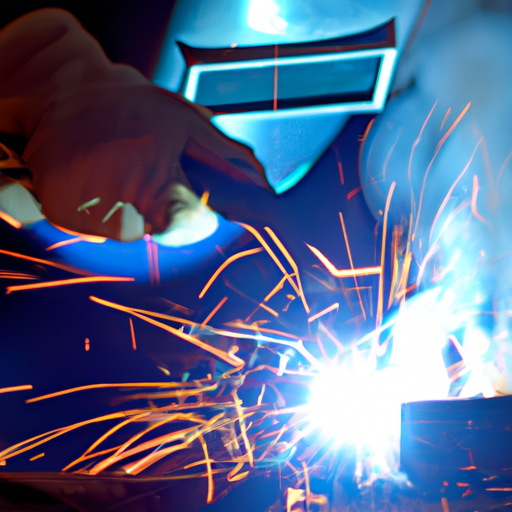Are you curious about the future prospects of welding as a career? In today’s rapidly evolving job market, it’s understandable to question whether welding is a declining profession. As industries evolve, automation and technological advancements have transformed various sectors, raising concerns about the future of traditional trades like welding. In this article, we’ll explore the current state of the welding industry, examine the driving factors behind its potential decline, and provide insights into the future prospects of this skilled trade.
Understanding the Labor Demand of Welding
The current state of the industry
The welding industry plays a crucial role in various sectors, ranging from manufacturing and construction to aerospace and automotive. It is a widely sought-after skill that offers a fulfilling career path for many individuals. At present, the industry is witnessing a steady demand for skilled welders, making it an attractive field for those interested in pursuing a career in welding.
Changes in demand over the past years
Over the past years, the demand for welders has experienced fluctuations, but overall, it has remained relatively stable. The increased emphasis on infrastructure development, such as bridges, buildings, and pipelines, has sustained the need for skilled welders. Additionally, the growth of industries like renewable energy and aerospace has also contributed to the demand for welders with specialized skills.
Key factors influencing demand
Several factors have a significant influence on the demand for welders. Technological advancements, economic conditions, globalization, and changing career perceptions contribute to the labor demand in the welding industry. These factors collectively determine the requirements for skilled welders and shape the landscape of job opportunities in this field.
Welding Industry Overview
Size and scope of the welding industry
The welding industry is a sizable sector that encompasses a wide range of activities. From manufacturing and construction to maintenance and repair, welding is an essential process across industries. The size of the welding industry can be measured by the number of employed welders and the revenue generated by welding-related businesses. With a substantial workforce and a significant economic contribution, the welding industry holds a prominent position in the global economy.
Range of industries employing welders
Welders find employment opportunities in various industries. Construction companies employ welders for building structures and infrastructure projects, while the automotive sector requires welders for manufacturing vehicles. The energy industry, including oil and gas, relies heavily on skilled welders for pipeline construction and maintenance. Other industries such as aerospace, shipbuilding, and manufacturing also heavily depend on welders to ensure the integrity and quality of their products.
Geographical distribution of welding jobs
Welding jobs are available worldwide, with varying concentrations in different regions. Geographical distribution of welding jobs is influenced by factors such as industrial development, infrastructure projects, and economic conditions. In countries with robust manufacturing industries or significant construction projects, the demand for welders is relatively high. Additionally, regions with a strong presence of specific industries, such as shipbuilding in coastal areas, may also have a greater need for welders.
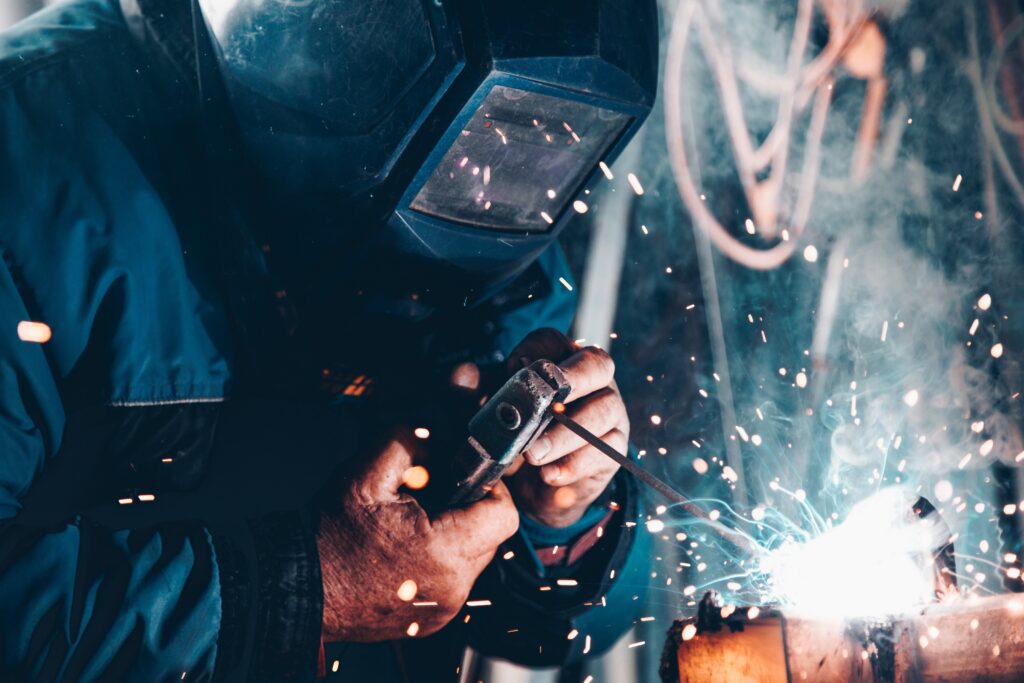
Technological Advancements Impact on Welding
Adoption of welding robots and automation
Technological advancements have made a remarkable impact on the welding industry, particularly with the adoption of welding robots and automation. Automation has revolutionized welding processes, improving efficiency, precision, and overall productivity. Welding robots can execute repetitive tasks with high accuracy, reducing the need for manual labor. While some may fear that this automation could lead to job losses for welders, it has actually created new opportunities for skilled individuals to operate and maintain these automated systems.
Influence of technological advancements on skill requirements
Technological advancements have also influenced the skill requirements in the welding industry. As automation takes over repetitive tasks, welders now need to possess a different set of skills. They must have a strong understanding of robotics, computer-aided design (CAD), and programming to operate and maintain welding robots. Additionally, the demand for welders with expertise in advanced welding techniques and specialized welding equipment has increased, reflecting the industry’s adaptation to new technologies.
Trends in welding technology
Welding technology continues to evolve, driven by the need for more efficient and effective processes. Trends such as laser welding, friction stir welding, and hybrid welding techniques have gained prominence. These technologies offer advantages like reduced heat input, higher precision, and increased strength of joints. As industries continue to seek ways to improve their manufacturing processes, the adoption of these advanced welding technologies is expected to further shape the demand for skilled welders in the future.
Effect of Globalization on the Welding Industry
Impact of international trade on local welding jobs
Globalization has had a substantial impact on the welding industry, especially concerning international trade. The opening up of markets and the exchange of goods and services across borders have provided new opportunities for welders. It has led to increased demand for welding expertise in regions where manufacturing has been outsourced or offshored. Local welding jobs may be affected by shifts in trade patterns, but globalization has also created new avenues for welders to participate in international projects and collaborate with diverse teams.
Changes due to outsourcing and offshoring
Outsourcing and offshoring have brought about changes in the welding industry. Manufacturing operations moving to countries with lower labor costs have resulted in the relocation of some welding jobs. This trend has led to increased competition and the need for welders to adapt to changing market dynamics. However, it is important to note that not all welding jobs can be easily outsourced or automated. Industries that require on-site welding and customized solutions still rely heavily on local welders, ensuring a continued demand for their skills.
Influence of globalization on supply chain and materials
Globalization has not only affected the location of welding jobs but has also influenced the supply chain and materials used in the industry. With the expansion of international trade, the availability of welding materials and equipment from different regions has increased. This has allowed welders to access a wider range of resources, enabling them to work with diverse materials and techniques. The exchange of knowledge and best practices across borders has also contributed to the continuous improvement of welding processes.
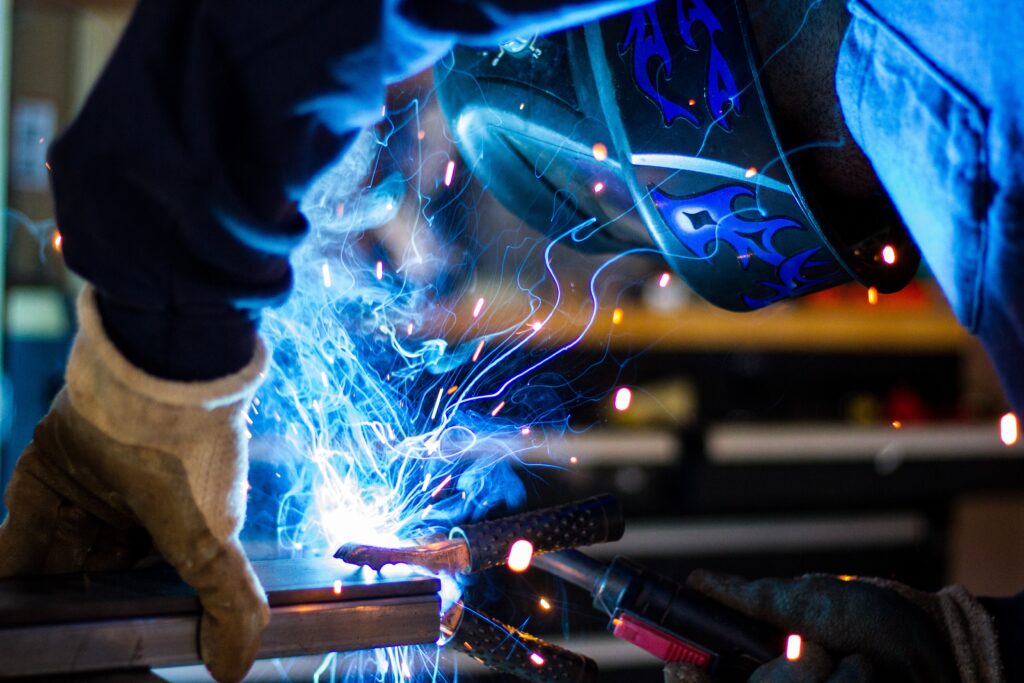
Impact of Economic Factors on Welding
Influence of economic downturns and recessions
Economic factors have a significant influence on the demand for welders. During economic downturns and recessions, industries that heavily rely on welding, such as construction and manufacturing, may experience a decline in demand. Reduced construction projects and manufacturing output can lead to temporary decreases in job opportunities for welders. However, it is important to note that the welding industry has shown resilience and tends to rebound as the economy recovers, offering new employment prospects for skilled welders.
Effect of fluctuations in the manufacturing sector
The manufacturing sector plays a pivotal role in determining the demand for welders. Fluctuations in manufacturing output can directly impact the need for welders in industries such as automotive, aerospace, and electronics. Changes in consumer demand, technological advancements, and global market conditions can result in fluctuations in manufacturing activity. It is crucial for welders to stay updated with industry trends and adapt their skills to meet the evolving demands of the manufacturing sector, ensuring their long-term employability.
Skills Gap in Welding
Understanding the welding ‘skill gap’
The welding industry is currently facing a skill gap, which refers to the mismatch between the skills required by employers and the available workforce. Despite the demand for skilled welders, there is a shortage of individuals with the necessary qualifications and expertise. The skill gap poses a challenge not only to the welding industry but also to the overall economic growth and development, as it can limit the seamless progression of projects and hinder innovation.
Reasons behind the skill gap
Several reasons contribute to the welding skill gap. The aging workforce, lack of interest in pursuing welding careers among younger generations, and limited access to quality training programs are some of the primary factors. Additionally, the rapid technological advancements in welding processes require welders to continuously update their skills, and the industry’s failure to keep up with the pace of change exacerbates the skill gap. Encouraging vocational education, promoting apprenticeship programs, and industry-academia collaborations can help alleviate the skill gap by attracting new talent and providing them with the necessary training.
Impact of skills gap on the future of welding jobs
The skills gap in welding poses challenges and opportunities for the future of welding jobs. As the demand for welders persists and the skill gap widens, highly skilled welders are likely to be in even higher demand. Welders who embrace lifelong learning, keep up with technological advancements, and possess specialized skills will have a competitive advantage. Additionally, the skill gap can open up avenues for innovation and automation, leading to the creation of new roles and opportunities within the welding industry.
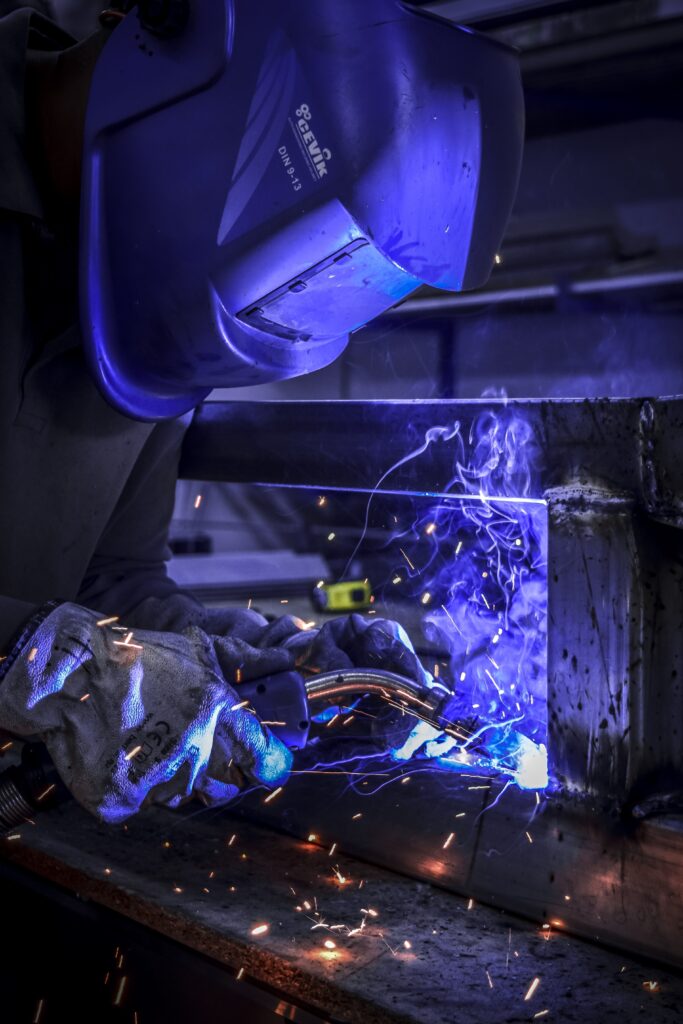
Changing Perceptions of Welding Careers
Public perception of welding as a career over time
Public perception of welding careers has evolved over time. In the past, welding was often associated with manual labor and lower status occupations. However, as society recognizes the importance of skilled trades and the economic potential they offer, perceptions have begun to shift. Welding is now seen as a respectable and rewarding career choice, requiring specialized skills, creativity, and problem-solving abilities.
Influence of changing career values
Changing career values have played a significant role in altering perceptions of welding careers. The rising demand for skilled trades and the increasing importance of hands-on skills in various industries have highlighted the value of welding as a career. Furthermore, the potential for attractive wages, career advancement, and the opportunity to work on exciting projects has further enhanced the attractiveness of welding careers for individuals seeking fulfilling and financially rewarding work.
Effect of stereotypes and misconceptions about welding jobs
Stereotypes and misconceptions about welding jobs have often perpetuated outdated perceptions of the industry. Many individuals still associate welding with outdated notions of dirty, dangerous work. However, the reality is far from that; modern welding practices prioritize safety, utilize advanced equipment, and offer a range of career paths. Addressing these stereotypes and promoting accurate information about the welding industry is crucial to attracting new talent and cultivating a diverse workforce that represents the true scope of welding careers.
Impact of Environmental Regulations on Welding
How welding contributes to environmental pollution
Welding processes can contribute to environmental pollution through emissions of hazardous gases and particulate matter. Depending on the materials being welded, processes such as arc welding can release harmful fumes and create airborne particles. Additionally, the energy-intensive nature of welding can contribute to greenhouse gas emissions if not managed efficiently. These environmental impacts have prompted the welding industry to adopt greener practices and technologies to minimize its ecological footprint.
Influence of green policies on welding practices
The implementation of green policies and environmental regulations has influenced welding practices. Governments and regulatory bodies have encouraged the adoption of cleaner and environmentally friendly welding processes. Welding companies are increasingly adopting practices such as fume extraction systems, ventilation, and the use of low-emission consumables to mitigate the environmental impact of their operations. Compliance with green policies has become essential for businesses to remain competitive and ensure a sustainable future for the welding industry.
Changes in job demand due to environment-friendly initiatives
Environmentally friendly initiatives in the welding industry have brought about changes in job demand. As companies seek to align themselves with sustainability goals, there is a growing need for welders with knowledge of environmentally friendly welding techniques and practices. This includes welders who are proficient in using low-emission consumables, are knowledgeable about proper ventilation and extraction methods, and can effectively contribute to reducing the environmental impact of welding processes. Welders who embrace these changes and possess the required skills will be in high demand as the industry continues to prioritize sustainability.
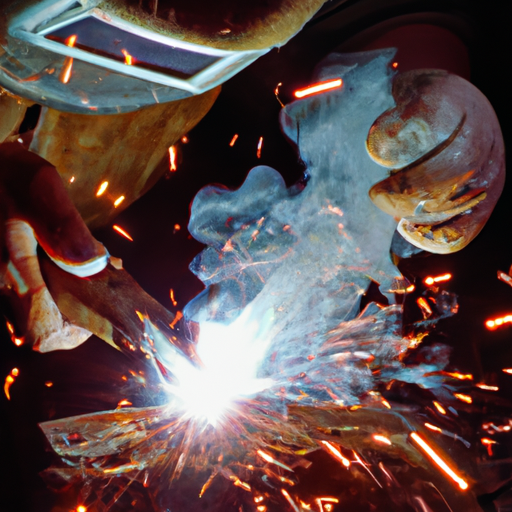
Emerging Trends in the Welding Industry
New materials and techniques in welding
Advancements in materials science have led to the emergence of new materials in the welding industry. From high-strength alloys to lightweight composites, welders must adapt their skills to work with these innovative materials effectively. Additionally, new welding techniques, such as friction stir welding and laser welding, are gaining prominence due to their unique advantages. Staying abreast of these emerging trends and acquiring the necessary expertise will be crucial for welders to remain competitive in the evolving industry.
Growth areas for welding like renewables and aerospace
As the world shifts towards cleaner energy sources, the renewable energy sector presents significant growth opportunities for welders. The construction and maintenance of wind turbines, solar panels, and other renewable energy infrastructure require the expertise of skilled welders. Similarly, the aerospace industry, with its constant drive for advancements and innovation, offers numerous prospects for welders to contribute to the manufacturing and maintenance of aircraft components. Welders who specialize in these growth areas can expect promising career prospects and job stability.
Transition in welding job profiles
The evolving landscape of the welding industry has led to a transition in welding job profiles. Traditional welding roles are being complemented by positions that involve specialized skills in automation, robotics, and computer-aided design. Welders now have the opportunity to pursue careers as welding technologists, robotic welding operators, or welding engineers. This transition in job profiles presents a chance for welders to expand their skill set and take on higher-level responsibilities, enhancing their professional growth and creating a more diverse and dynamic workforce.
Future Outlook of the Welding Industry
Projected job growth or decline
The future outlook for the welding industry appears promising, with projected job growth in various sectors. The growing need for infrastructure development, advancements in manufacturing technologies, and the expansion of renewable energy all contribute to the positive outlook for welders. However, it is important to note that the job market can be influenced by multiple factors, such as economic conditions, technological advancements, and global trends. Staying adaptable and continually updating skills will ensure welders can seize the opportunities presented in a changing job market.
Driving forces of future changes in the welding industry
Several driving forces are expected to shape the future changes in the welding industry. Technological advancements, particularly in automation and robotics, will continue to change how welding processes are carried out. The push towards sustainable practices and compliance with environmental regulations will further prioritize greener welding techniques. Additionally, shifts in global trade patterns and the emergence of new industries and markets will present new challenges and opportunities for welders. Understanding these driving forces and adapting to them will be essential for welders to thrive in the future.
Potential impact of ongoing trends on the future of welding jobs
Ongoing trends, such as the adoption of automation, the transition to greener practices, and the emergence of new materials, are likely to impact the future of welding jobs. While automation may streamline certain welding tasks, skilled welders will still be needed to operate and maintain the automated systems. The demand for environmentally conscious welding practices will create opportunities for welders specializing in sustainable techniques. Additionally, the ability to work with new materials and adapt to evolving technologies will play a vital role in securing future job prospects. Overall, the future of welding jobs will continue to evolve, presenting a mix of challenges and opportunities for skilled welders.
